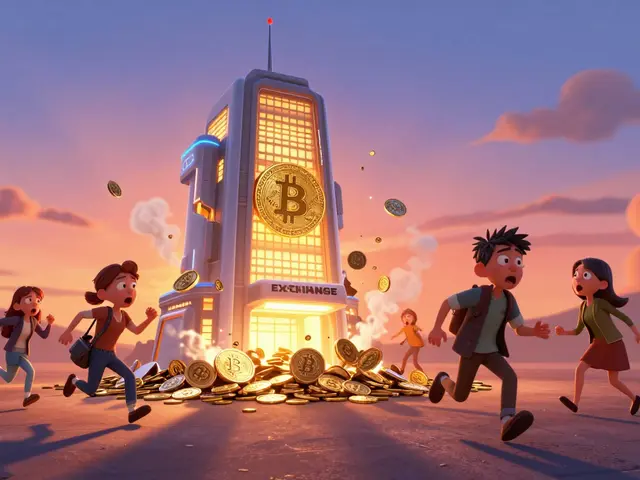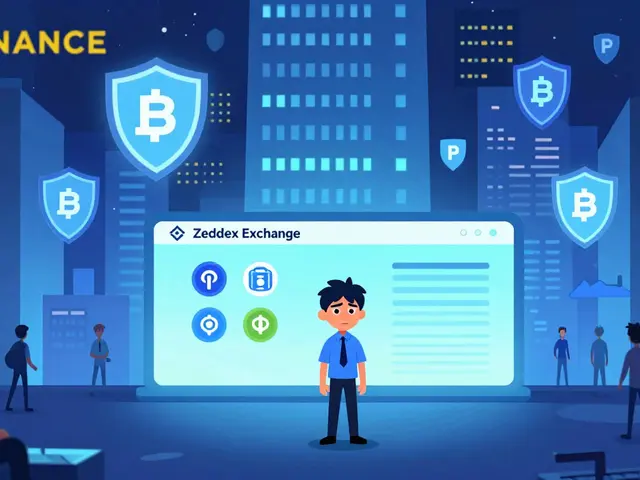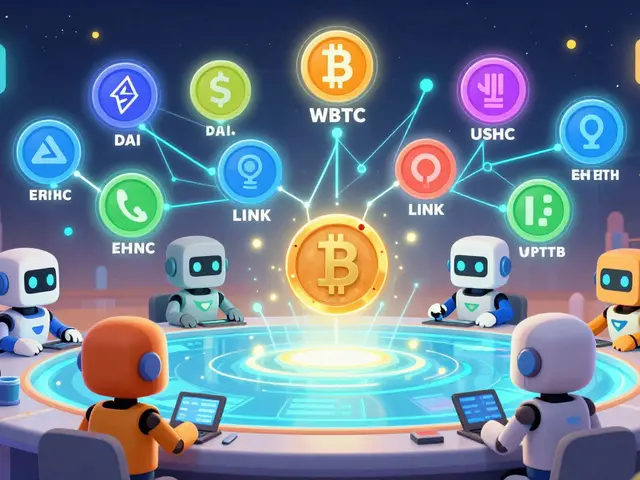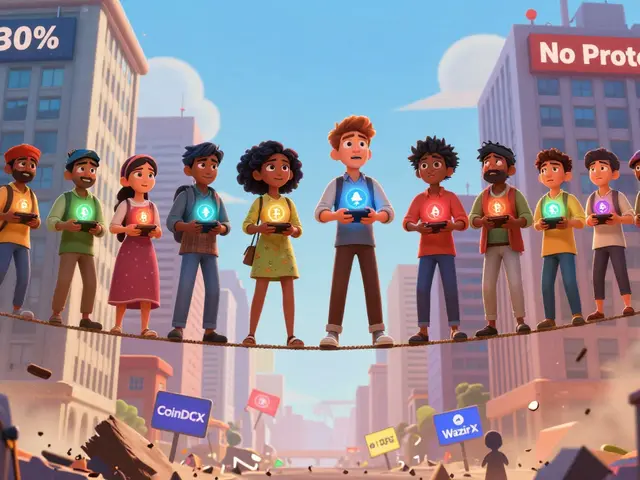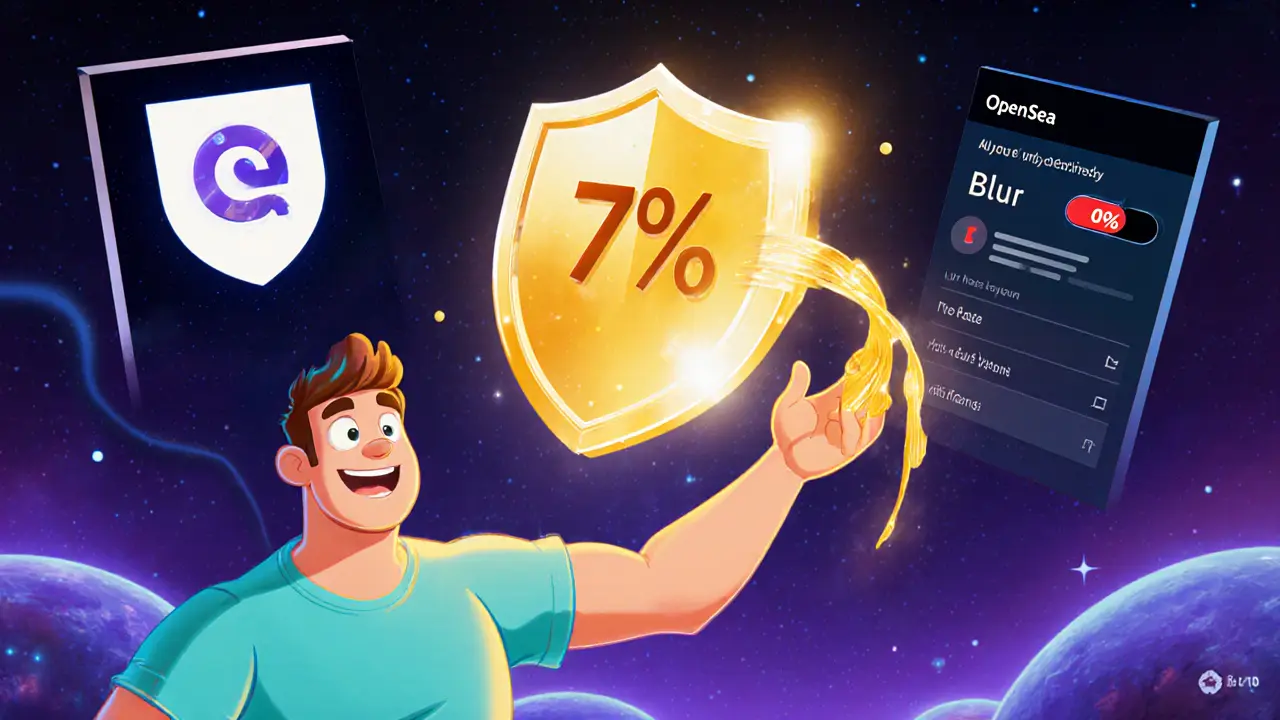NFT Royalty Calculator
Calculate how much you'd earn from NFT sales based on royalty settings and marketplace enforcement. Understand the financial impact of different platform choices.
Estimated Royalty Amount
$0.00
Based on your selection, you would earn $0.00 per sale.
When you mint an NFT, you’re not just selling a digital image or audio file-you’re setting up a potential lifelong income stream. That’s because NFTs can include royalties, meaning you earn a percentage every time your work is resold. But here’s the catch: not all marketplaces make those royalties happen. Some let buyers ignore them. Others force them. And that split is tearing the NFT world apart.
How NFT Royalties Actually Work
NFT royalties are built into the smart contract when you create the asset. Most use the ERC-721 or ERC-1155 token standards, with ERC-2981 being the official way to encode royalty payments. When someone buys your NFT on OpenSea, Rarible, or Foundation, the contract automatically sends, say, 7% of the sale price to your wallet. Simple. Predictable. Fair.That 7% isn’t random. Industry data shows the average royalty rate across major platforms is between 5% and 10%, with 6% being the most common. Creators set this number during minting. It’s locked in. Or so you thought.
The Rise of Optional Royalties
Enter Blur. This marketplace, built for traders and high-frequency buyers, lets users set royalty payments to zero-even if the creator set it at 10%. No legal warning. No pop-up. Just a toggle. And suddenly, your royalty vanishes.Blur’s argument? Market efficiency. They say mandatory fees inflate prices, reduce liquidity, and punish collectors who want to flip assets quickly. To them, royalties aren’t a contract-they’re a donation. If you value the artist, pay. If not, skip it. It’s like tipping a street performer: nice if you can, not required.
The result? Blur’s trading volume exploded. In early 2025, it surpassed OpenSea in daily volume, mostly because buyers could avoid paying royalties. But creators? Many saw their income drop by 60-80% on collections listed there. Some artists pulled their entire libraries off Blur. Others stayed, hoping for exposure, even if they got paid nothing.
The Pushback: Mandatory Royalties
OpenSea didn’t sit back. In late 2024, they rolled out tools to block trades from royalty-optional marketplaces like Blur. If your NFT collection has mandatory royalties enabled, OpenSea won’t let it be sold on platforms that ignore them. It’s a digital wall. A tech lock.OpenSea’s stance is clear: royalties are part of the original deal. When you minted that NFT, you trusted the system to pay you every time it changed hands. Breaking that promise isn’t a buyer’s right-it’s a breach of trust. Their users, mostly artists and collectors who care about long-term value, support this. They’re not here to flip. They’re here to support creators.
But mandatory enforcement isn’t perfect. It reduces liquidity. Buyers who hate paying royalties avoid these collections. Some NFTs sit unsold for weeks. And if a creator chooses mandatory royalties, they’re essentially choosing income over speed. It’s a trade-off: steady payments, fewer sales.
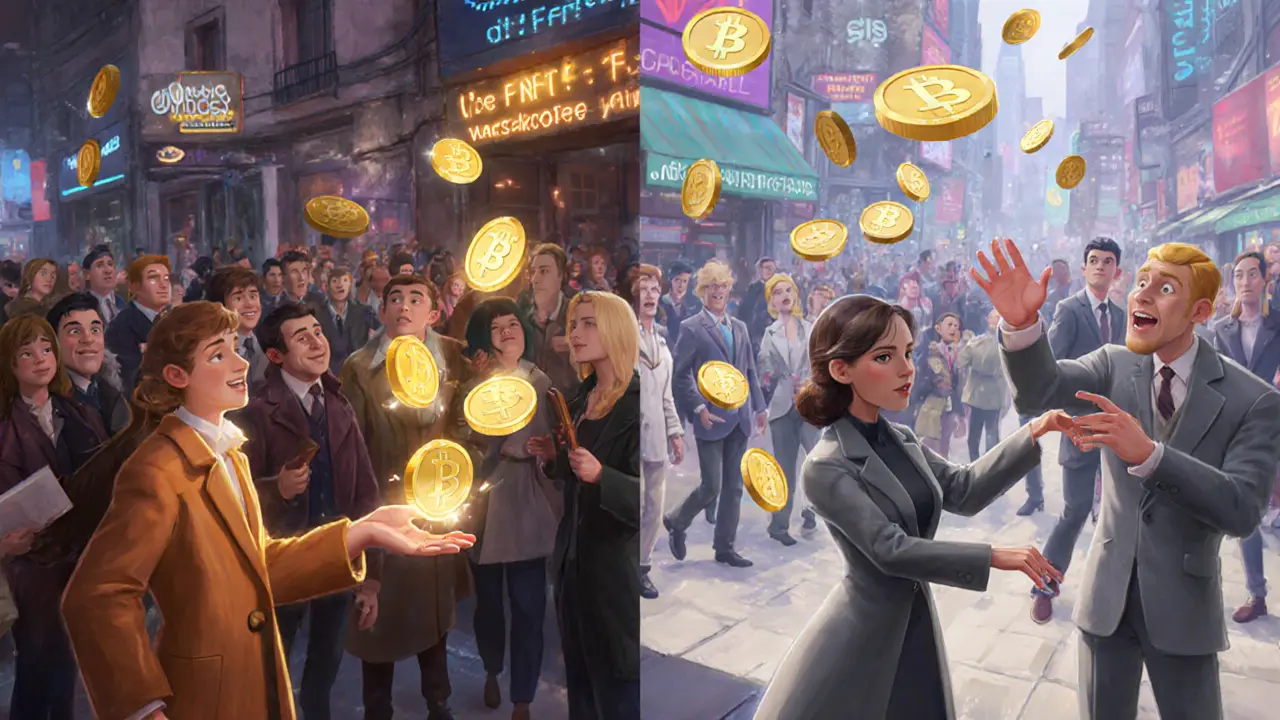
Who’s Right? The Artist or the Trader?
Digital artist Beeple, who sold an NFT for $69 million, put it bluntly: “There is zero way to force royalties technologically, so creators will have to build a collector base that wants to honor these royalties. … It’s really that simple.”He’s not saying royalties shouldn’t exist. He’s saying tech alone won’t protect them. If your collectors don’t believe in paying you, they’ll find a way around it. That means your success depends on your community-not your smart contract.
On the flip side, blockchain lawyers Adam Chernichaw and Prat Vallabhaneni point out that smart contracts aren’t legally binding contracts. Courts don’t recognize them as such. So if someone skips your royalty, you can’t sue them in a traditional court. The only enforcement is technical-and that’s failing.
The Hybrid Middle Ground
Some new platforms are trying to split the difference. SuperRare and Foundation now let creators choose: mandatory or optional. You can enable royalties for your main collection, but leave a few experimental drops open for traders. It’s a way to test the market without abandoning your core audience.Others are building reputation systems. If you consistently pay royalties, you get a badge. If you ignore them, you’re flagged. It’s not enforced by code, but by social pressure. Collectors who care about ethics avoid the bad actors. It’s community-based enforcement.
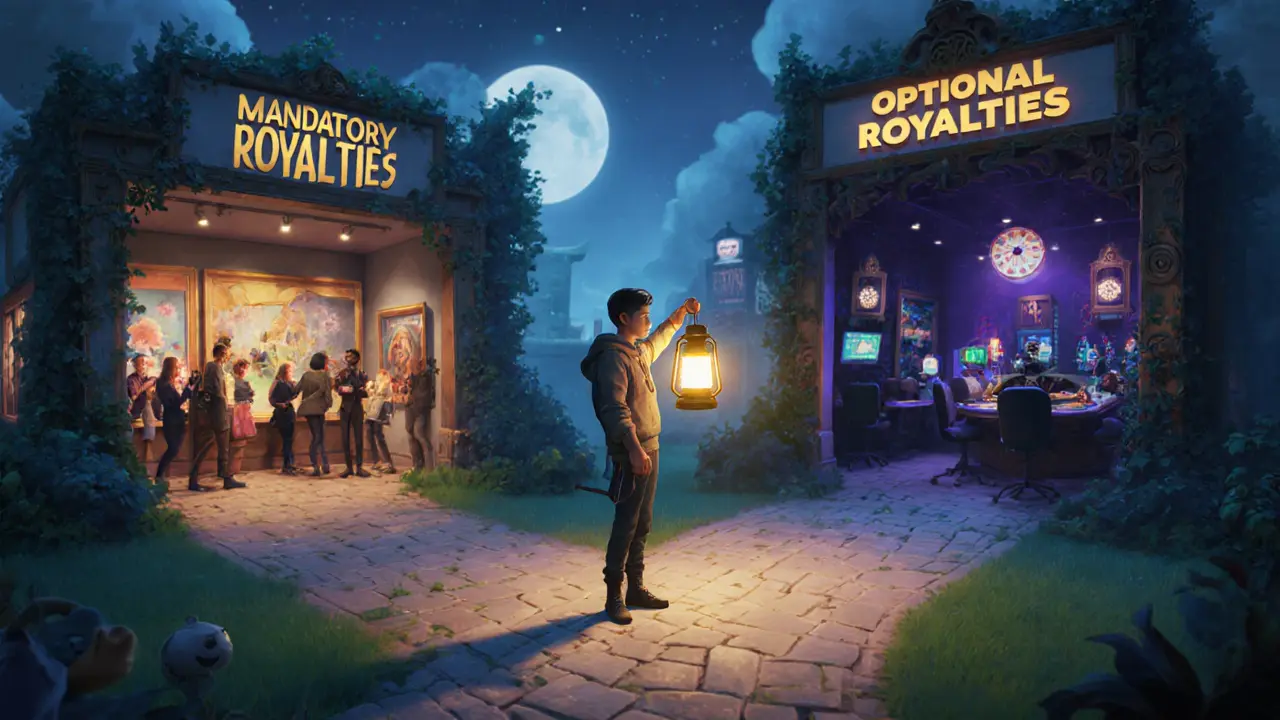
What This Means for Creators
If you’re an artist or creator:- Don’t assume royalties are guaranteed. Check which marketplaces enforce them.
- Use platforms that support on-chain enforcement if you want steady income.
- Don’t list on Blur or similar platforms if you rely on royalties for survival.
- Build a community that values your work-because that’s the only real protection.
- Consider offering tiered royalty models: higher for primary sales, lower or optional for secondary flips.
And if you’re a collector? Think about what kind of ecosystem you want to support. If you skip royalties, you’re contributing to a system where creators can’t make a living. If you pay them, you’re helping sustain digital art as a viable career.
The Future Is Unclear
This isn’t just a technical debate. It’s economic, ethical, and legal. Regulators might step in one day and demand royalties be enforced. Or they might decide NFTs are just digital collectibles, with no special rights for creators.Right now, the market is split. One side believes in code as law. The other believes in free markets and buyer freedom. Neither side is going away. And creators are caught in the middle.
What’s clear? If you’re making NFTs, you need to understand this battle. Your income depends on it. And the choice isn’t just about which platform you use-it’s about who you want to serve: the traders, or the artists.
Are NFT royalties legally enforceable?
No, not in a traditional legal sense. Smart contracts are automated code, not court-enforceable agreements. While they can be programmed to pay royalties automatically, there’s no legal recourse if a buyer or marketplace ignores them. Courts haven’t ruled on whether royalty terms in NFTs constitute binding contracts, so enforcement relies entirely on platform rules and community norms.
Can I change my royalty rate after minting an NFT?
Generally, no. Royalty percentages are hardcoded into the smart contract at the time of minting. Once deployed on the blockchain, they can’t be altered without redeploying the entire collection-which defeats the purpose. Some platforms offer tools to create new versions of your NFTs with different royalty settings, but the original tokens keep their original terms.
Which marketplaces enforce royalties by default?
OpenSea, Foundation, and SuperRare enforce royalties on-chain for collections that have them enabled. These platforms block trades from marketplaces like Blur that ignore royalties. Blur, LooksRare, and X2Y2 allow buyers to set royalties to zero, even if the creator set them higher. Always check a platform’s policy before listing your work.
Do I have to pay royalties when I buy an NFT?
On platforms that enforce royalties, yes-you must pay them. On optional platforms like Blur, you can choose to pay 0%. But even if you can skip it, consider whether you want to support the artist. Skipping royalties undermines the system that lets creators earn from their work long after the first sale.
Why do some traders oppose mandatory royalties?
Traders argue that mandatory royalties make NFTs less liquid and inflate prices. They say buyers should have the freedom to decide how much to pay, just like in physical art markets where resellers don’t pay the original artist. They believe the market should determine value-not a fixed percentage locked into code.
Can I earn royalties from NFTs I buy and resell?
Only if you’re the original creator. Buyers don’t get royalties when they resell. Royalties are paid to the original artist or rights holder, not to subsequent owners. Some platforms allow creators to assign royalty rights to others, but that’s rare and requires special contract setup.
What happens if a marketplace shuts down?
The smart contract still exists on the blockchain. Even if OpenSea or Blur disappears, your NFTs and their royalty terms remain active. You can still sell them on other platforms that support ERC-2981. The royalty mechanism is decentralized-it doesn’t depend on any single company.
Are royalties the same across all blockchains?
No. Ethereum-based NFTs (ERC-721/ERC-2981) have the most consistent royalty support. Solana and Polygon use different standards, and enforcement varies widely. Some chains don’t support royalties at all. Always check the blockchain’s capabilities before minting if royalties matter to you.


